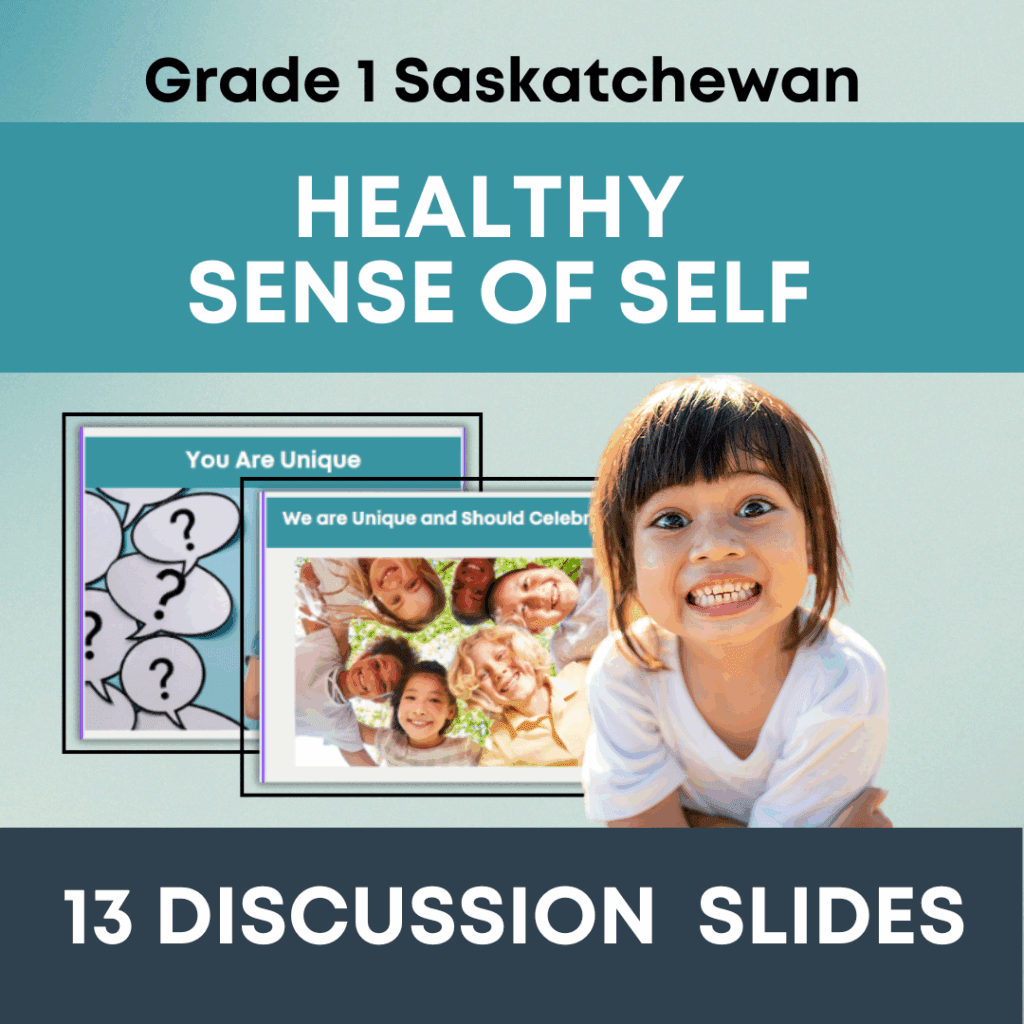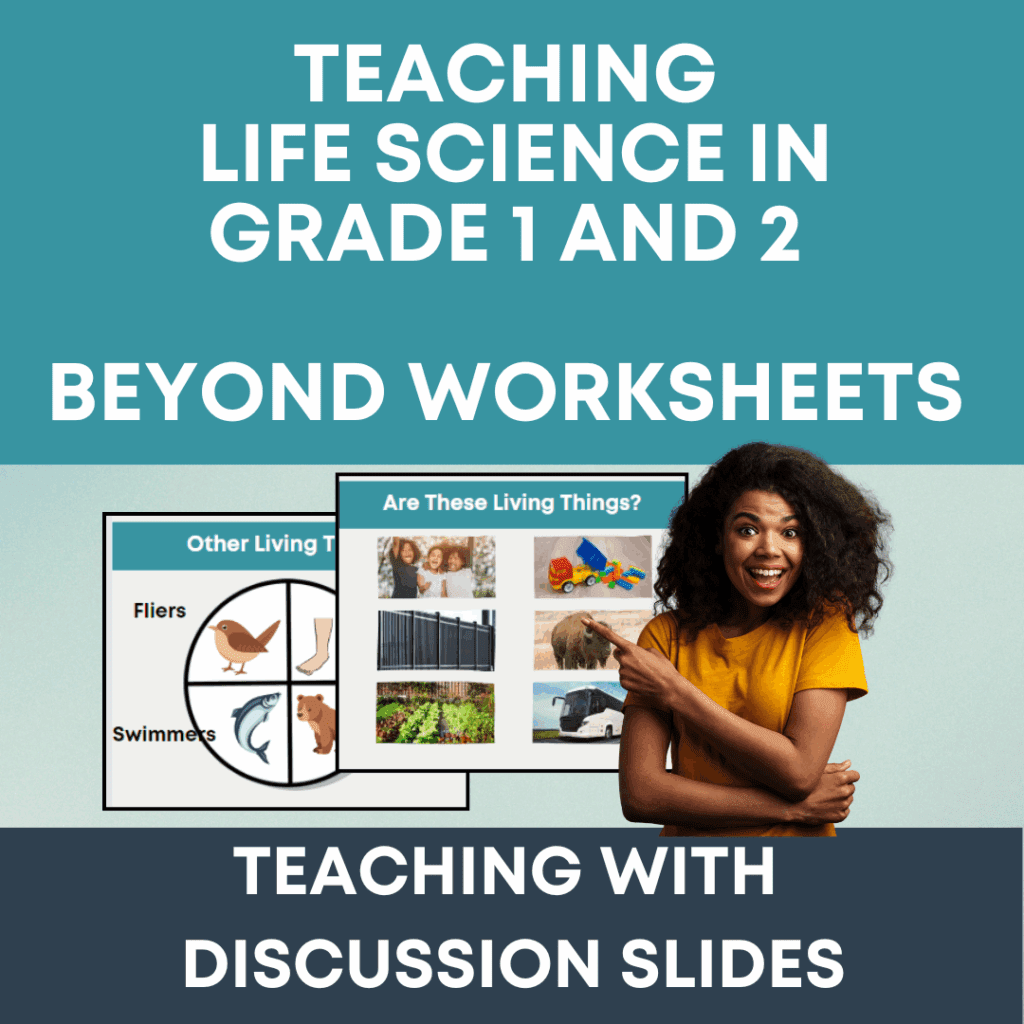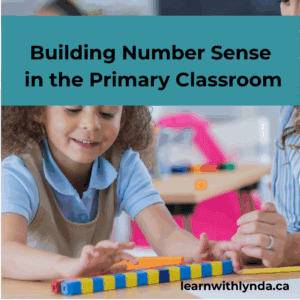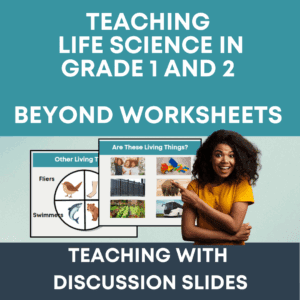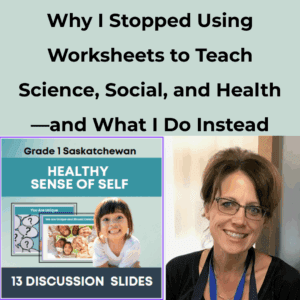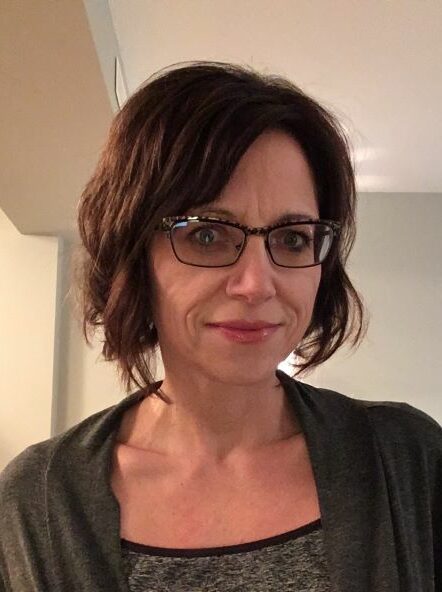Science in a primary classroom should be curious, hands-on, and full of wonder—not filled with worksheets. When I shifted the way I approached teaching life science in my Grade 1 and 2 classroom, I discovered that my students became more engaged, more thoughtful, and more connected to the world around them.
Instead of handing out worksheets, I now introduce science topics using discussion slides. These slides use rich visuals and open-ended questions to spark meaningful conversations. The teacher facilitates, but the students do the thinking, wondering, and explaining.
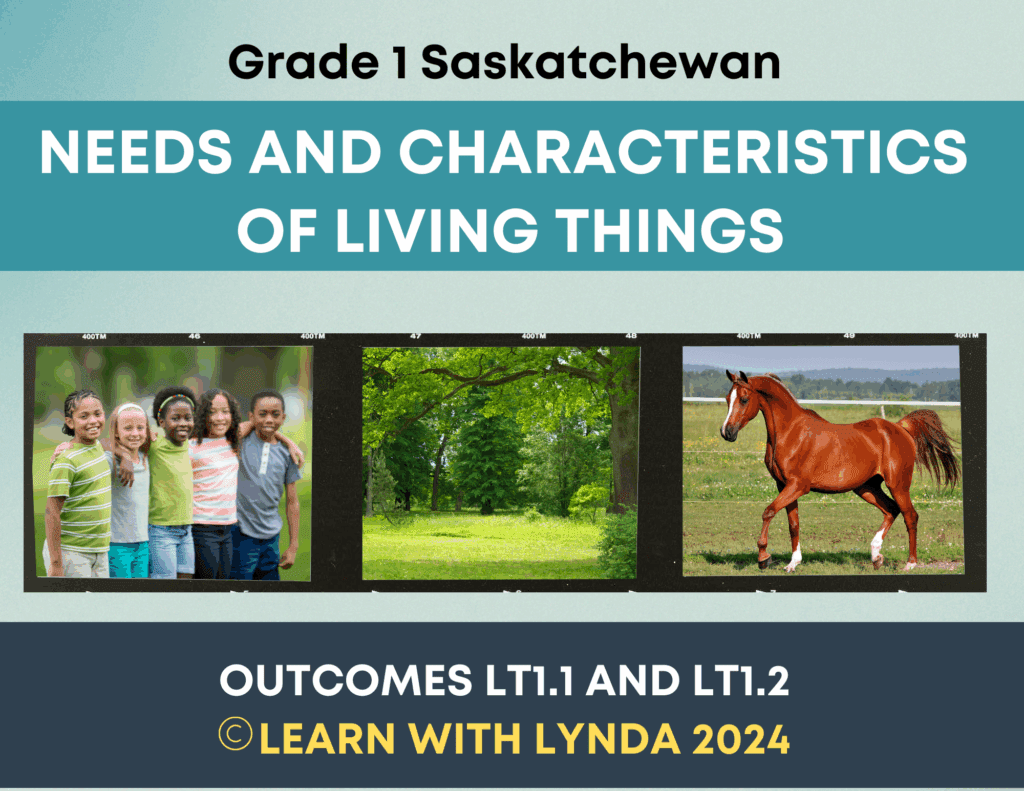
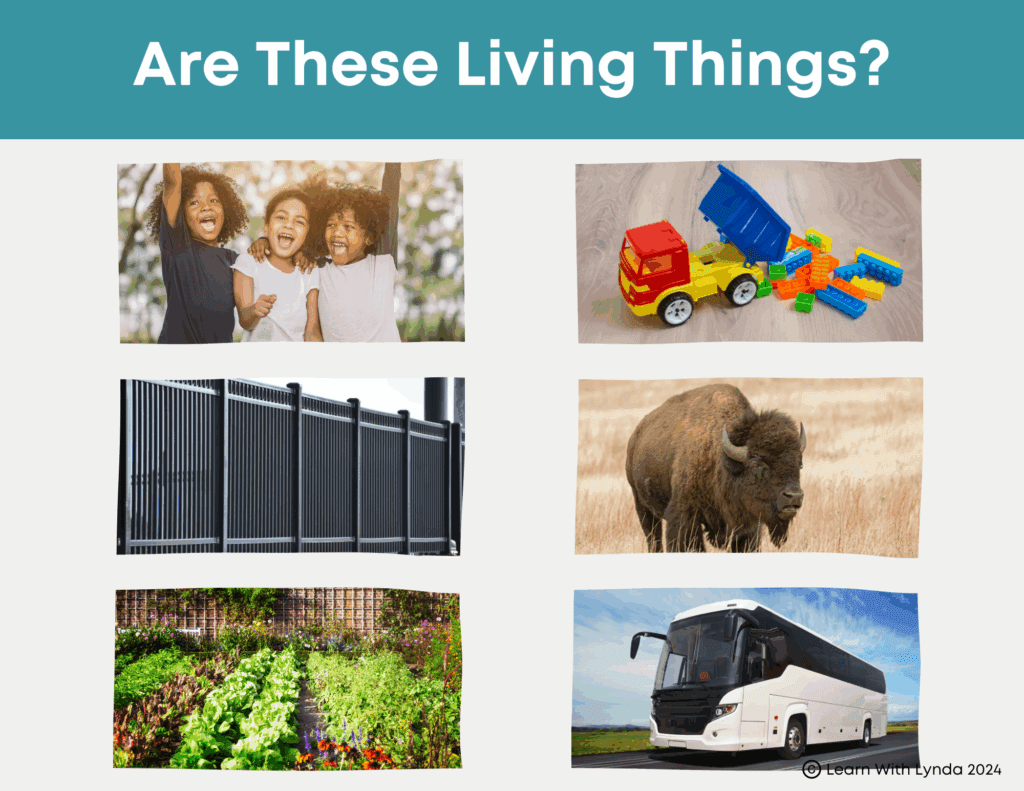
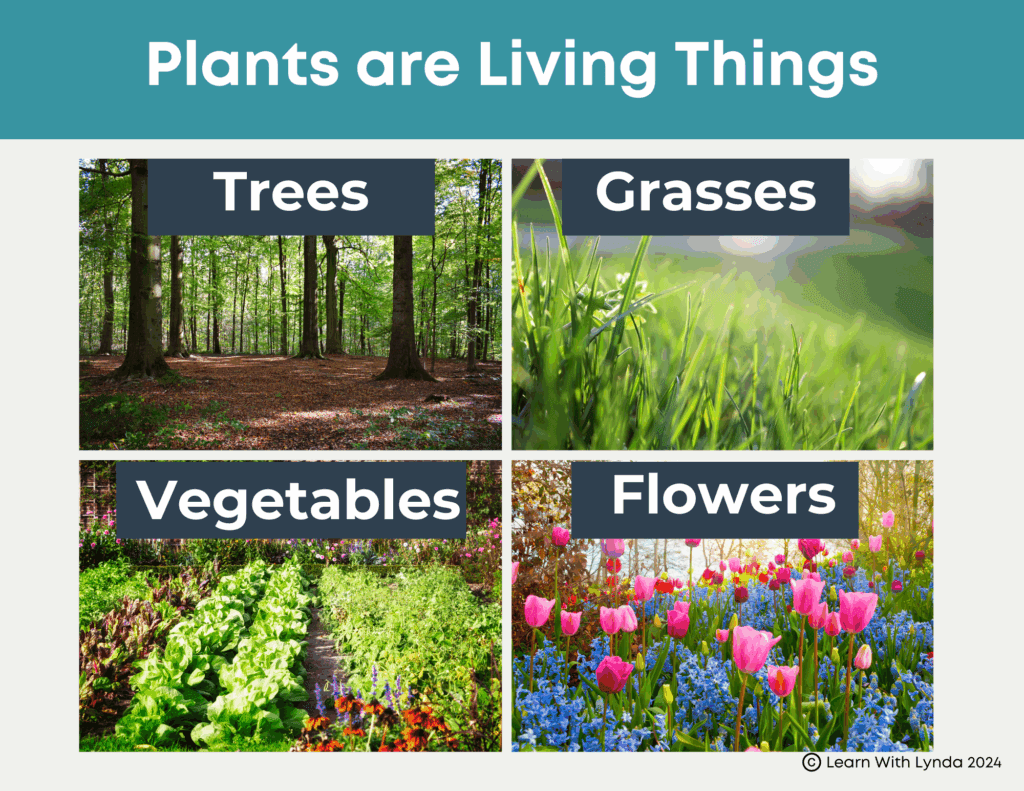
Something powerful happens when students discuss instead of just complete.
- They develop a deeper understanding by building on what they already know and listening to the thinking of their peers.
- They use oral language to process new concepts, make connections, and ask questions.
- They build confidence as they learn to share their ideas in a safe and supportive space.
- They learn to collaborate and problem-solve together, which strengthens classroom community and encourages respectful dialogue.
Life Science in Grade 1: Needs and Characteristics of Living Things
In Grade 1, we begin our life science learning by exploring the needs and characteristics of living things. The discussion slides help students connect the science content to what they already know about themselves as living things. We talk about what all living things—people, plants, and animals—need to survive and thrive.
Through conversation and visual prompts, students begin to:
- Identify basic needs like food, water, air, and shelter
- Compare how humans, plants, and animals meet those needs in different ways
- Understand how the environment supports living things
- Begin to notice patterns and relationships in the natural world
To extend the learning, we explore living and non-living things through engaging videos like:
Life Science in Grade 2: Animal Growth and Change
In Grade 2, we build on what we’ve learned by exploring animal growth and change. We revisit the concept of living things and focus on how they grow, develop, and depend on their environment.
Using the discussion slides, students:
- Compare the stages of human development (baby, youth, adult, elder) to animals’ life cycles
- Discuss similarities and differences between how humans and animals grow
- Explore how living things are connected to and influenced by their environment
- Begin to understand interdependence in the natural world
Some of my favourite book resources to support the discussions are:
- Animals Here We Grow by Shelley Rotner
- Round and Round Goes Mother Nature by Gabby Dawnay
- The Ducks Fly Away by Kim Soo Goodtrack
- Baby Beaver by Kim Soo Goodtrack



Adding Playful Invitations to Deepen Learning
Hands-on experiences help bring science to life for young learners. After our discussions, we set up playful invitations that give students a chance to investigate, explore, and apply their learning.
For Grade 1:
- Investigate how different seeds grow
- Experiment with what happens when plants are given or denied light and water
For Grade 2:
- Sort toy animals by characteristics or habitats
- Create shelters or dioramas to represent animal habitats
- Role-play life cycles using toys or story props
These learning invitations encourage students to ask questions, test ideas, and explain their thinking—all critical skills for young scientists.
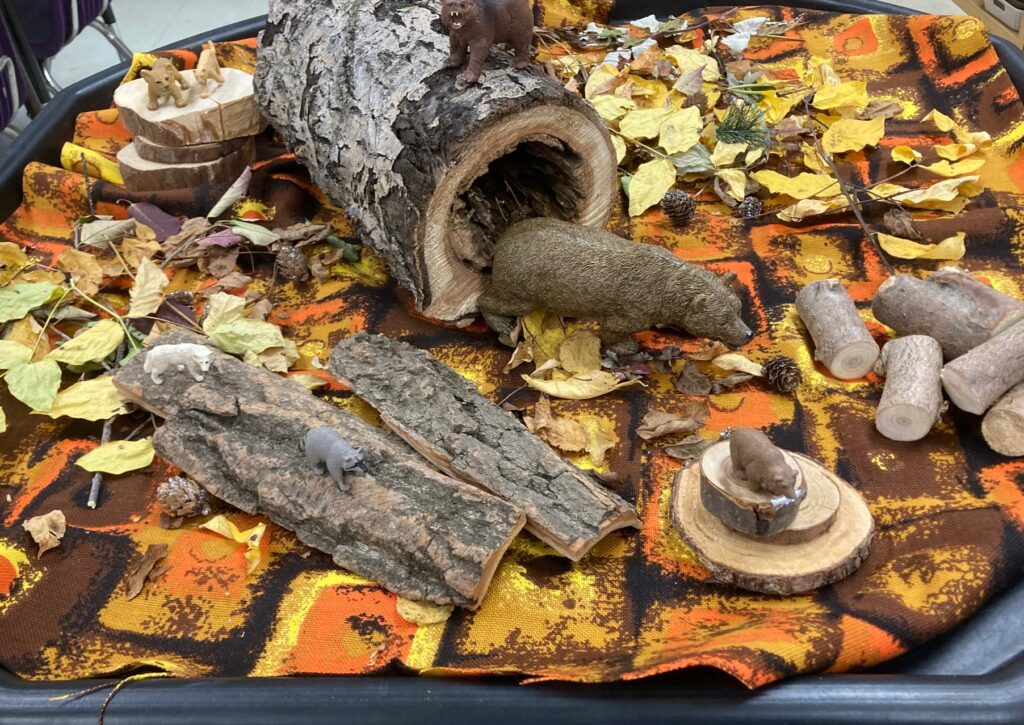
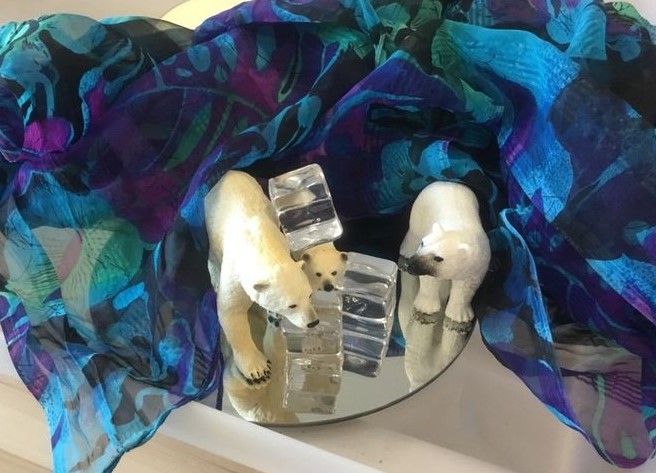
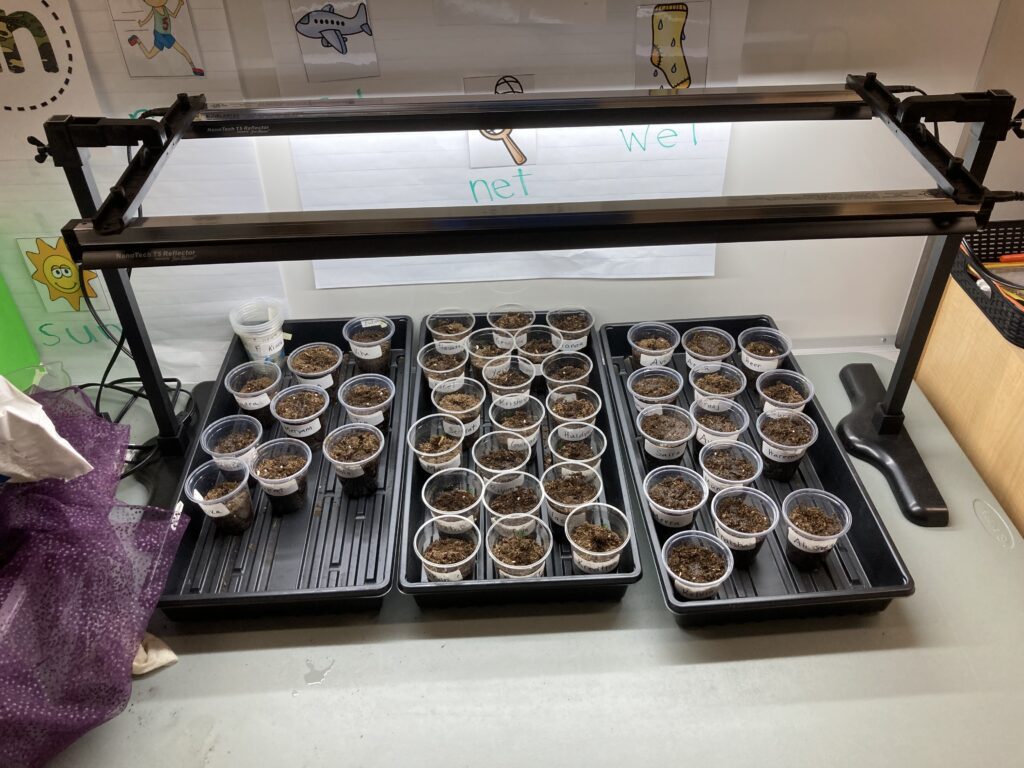
Why I Use Science Discussion Slides
The Science Discussion Slides I created have completely changed the way I teach life science. Rather than just delivering information, I’m now creating space for my students to think, talk, and wonder together. They’re not memorizing—they’re making meaning.
If you’re looking for a way to make your science lessons more engaging, connected, and student-centered, I encourage you to give discussion slides a try.
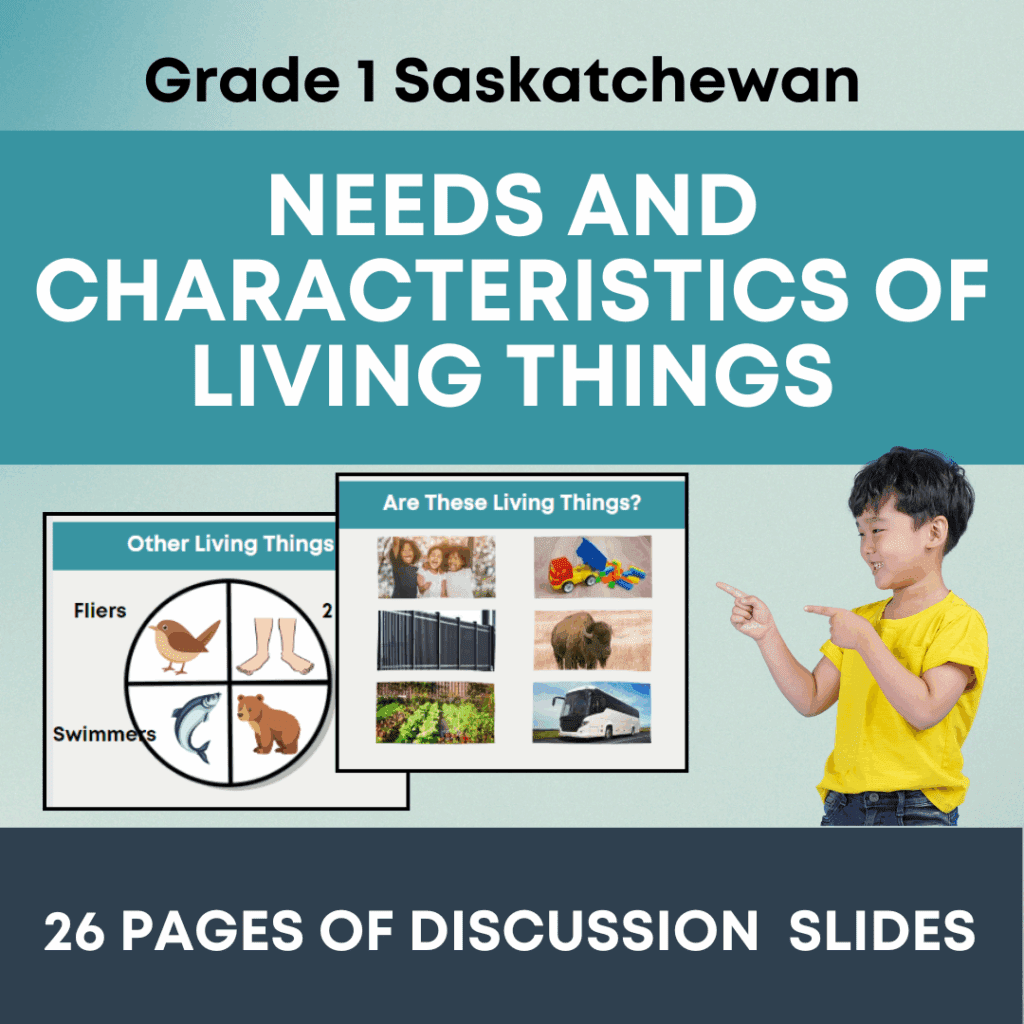
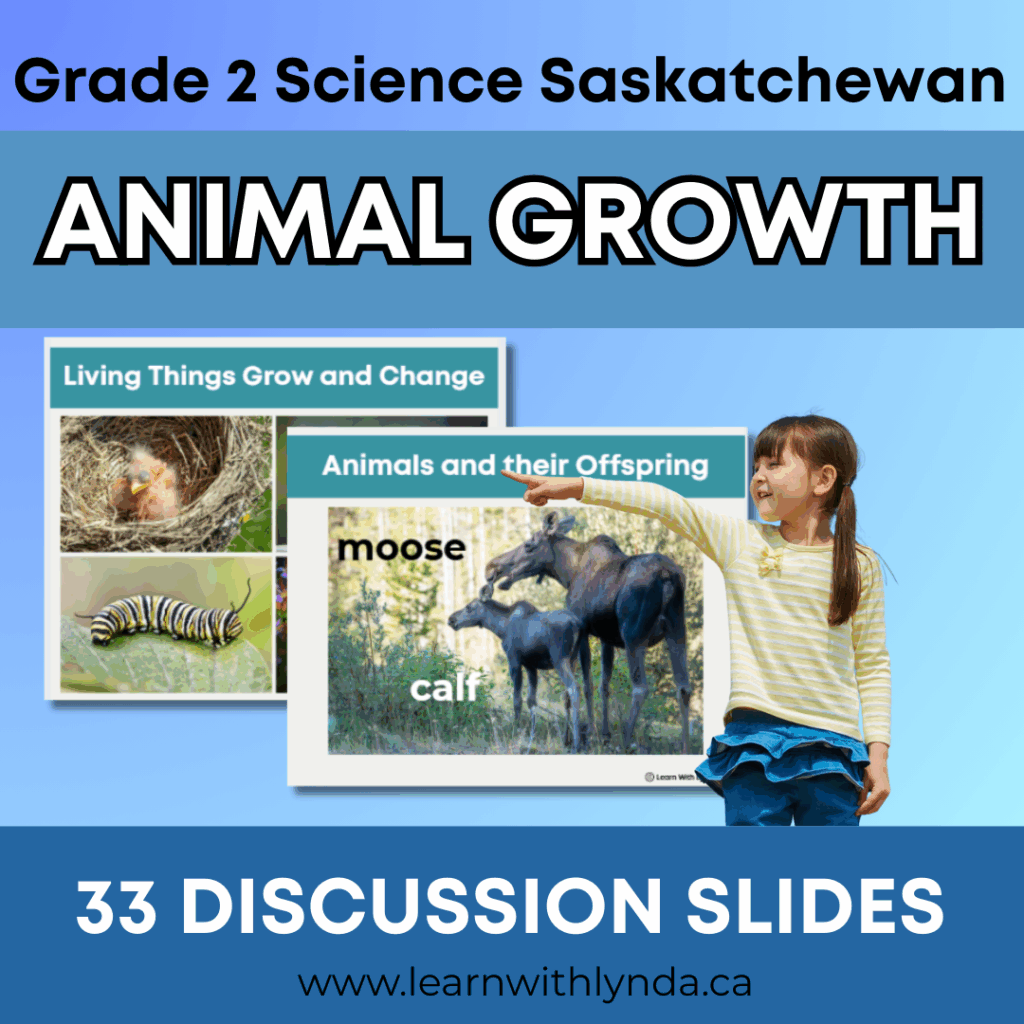
You can find my ready-to-use Science Discussion Slides for Grade 1 and 2 in my Teachers Pay Teachers store to help you start the year with deeper conversations, stronger engagement, and joyful learning.
Let’s Talk Science—Without the Worksheets
In a world that often moves too fast, slowing down to have conversations in the classroom is more important than ever.
When we give students time to talk, reflect, and make connections, they begin to see science as something they are part of—not just something they read about.
Let’s make science meaningful, hands-on, and full of discovery. One conversation at a time.
Happy Learning
Lynda
Here is the link to my Teachers Pay Teachers Store. I’ve created Discussion Slides for the Saskatchewan Grade 1 and 2 Science, Heath and some Social Studies curriculum topics.
If you would like to see a sample of the slides. Here is a link to receiving your free copy of my Sense of Self Health Discussion Slides.
